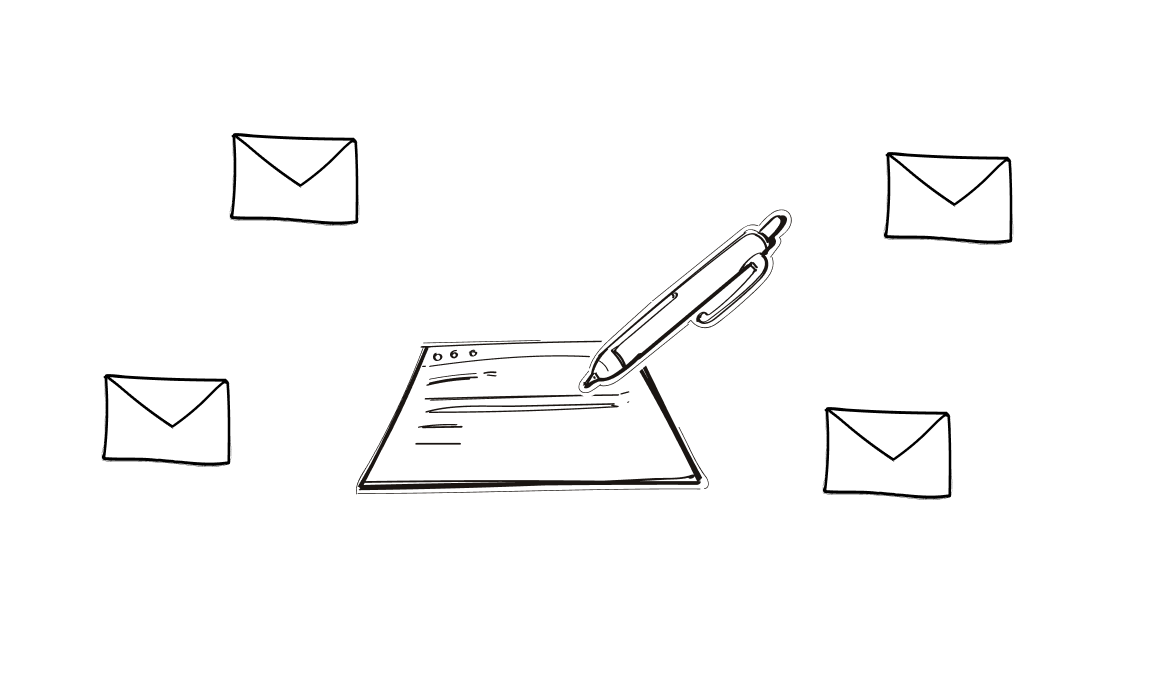If you look at it, outreach is both an art and a science. Yet, for many busy marketers, challenges like low response rates, poorly targeted lists, or inconsistent follow-up can slow progress and drain resources. What if you could turn these obstacles into opportunities for growth? In this guide, we’ll explore several common outreach challenges, and for each, we’ll walk through a “before” scenario that highlights the pain point and an “after” scenario that shows how you can overcome it with practical strategies and smart adjustments.
Challenge 1: Low Response Rates
Before
Imagine spending hours crafting personalized outreach emails, only to see dismal open rates and few, if any, responses. You’re left wondering if your messaging is off or if your audience simply isn’t interested. In this scenario, your efforts seem wasted, and engagement is at an all-time low.
After
By refining your subject lines,such as adding high-quality profile images with a photo enhancer, you can create a more professional and engaging first impression, increasing response rates segmenting your audience more effectively, and A/B testing different messaging strategies, you can see a dramatic improvement. For example, switching from generic subject lines to more targeted ones like “Quick Question About Your [Industry] Strategy” can boost open rates significantly. After implementing these tweaks, you notice not only more opens but also a higher percentage of replies. Your outreach becomes more dynamic, leading to deeper conversations and better-qualified leads.
Challenge 2: Poorly Targeted Lists
Before
You’re sending outreach emails to a broad audience, hoping to catch the eye of potential customers. However, the lack of specificity means that many recipients find the content irrelevant, and your engagement metrics suffer. The result? A cluttered inbox full of uninterested prospects and wasted marketing efforts.
After
After investing time in refining your customer persona and cleaning up your contact lists, you start targeting only those who genuinely fit your ideal customer profile. By leveraging data analytics and segmentation tools, you send more tailored messages that speak directly to the needs and pain points of your audience. The after scenario shows a higher engagement rate and a more positive response, as your emails now reach the people who are most likely to be interested in your product or service.
Challenge 3: Inconsistent Follow-Up
Before
Without a structured follow-up system, you send one-off emails and then hear nothing back. Prospects fall through the cracks, and your outreach strategy becomes a series of missed opportunities. The lack of consistent follow-up makes your communications appear unprofessional and unengaged.
After
By integrating an automated follow-up sequence into your outreach strategy, you ensure that every prospect receives a series of timely, personalized touchpoints. For instance, an automated drip campaign can send a reminder a few days after the initial email, followed by a value-add message a week later. This consistency helps maintain the conversation, demonstrates persistence without being pushy, and ultimately leads to higher conversion rates. Your outreach now feels systematic and thoughtful, resulting in a more engaged audience.
Challenge 4: Generic Messaging
Before
Your outreach emails sound the same to every recipient—generic, mass-produced content that fails to resonate. Prospects quickly tune out or mark your emails as spam because they don’t feel personally addressed or relevant to their specific needs.
After
When you start personalizing your messaging by incorporating data-driven insights—such as recent activities, industry-specific challenges, or even a personalized compliment on their recent work—the tone of your outreach changes completely. Your emails now feel like they were written just for the recipient, making them more likely to open, read, and respond. After these changes, you notice a marked improvement in engagement metrics and a higher conversion rate, as your messaging now aligns closely with each prospect’s unique context. The right tools, like SEMrush, can also help refine your strategy—and with a SEMrush discount, you can maximize results without overspending.
Challenge 5: Lack of Social Proof
Before
Your outreach efforts may be effective in getting your message across, but without any social proof—like testimonials, case studies, or notable client mentions—prospects remain skeptical. They’re not sure if your product or service has real-world credibility, and the decision to engage becomes more difficult.
After
By incorporating elements of social proof into your outreach emails, such as brief case studies or links to client testimonials, you build trust and credibility. For example, a well-placed quote from a satisfied customer or a short success story can make a significant difference. In the after scenario, prospects feel more confident in your offering, resulting in increased engagement and a higher likelihood of conversion. Your outreach now stands on a foundation of proven results, making it much more persuasive.
Challenge 6: Overwhelming Your Prospects
Before
Sending too much information in a single outreach email can be overwhelming. Prospects receive dense, text-heavy emails that require too much effort to digest, leading to lower engagement and higher bounce rates. The sheer volume of information can deter them from even considering your message.
After
By streamlining your emails and focusing on one key message at a time, you create a more digestible and engaging experience. Using clear headers, concise language, and bullet points (when appropriate), you make it easy for recipients to quickly understand the value proposition. Additionally, linking to more detailed content on your website allows interested prospects to explore further without feeling bombarded. The after scenario shows improved readability and engagement, as prospects are more likely to respond when the information is presented in a clear, manageable format.
Challenge 7: Inefficient Use of Tools
Before
Many busy marketers struggle with juggling multiple tools that don’t integrate well, resulting in fragmented data and disjointed outreach efforts. This inefficiency can lead to missed opportunities, duplicated efforts, and an overall lack of clarity in your strategy.
After
By consolidating your tools—integrating your CRM with email automation, analytics, and social media platforms—you create a seamless workflow that streamlines your outreach process. For instance, using an all-in-one marketing platform allows you to track interactions, manage follow-ups, and measure engagement in one central dashboard. The after scenario is one where your processes are smoother, your data is unified, and your team can focus more on strategy rather than juggling multiple software solutions.
Challenge 8: Lack of Customization in Outreach Channels
Before
Outreach efforts that rely on a single channel, such as email, may miss opportunities to connect with prospects who prefer other forms of communication. Relying solely on one medium can limit your reach and result in lower overall engagement.
After
A multi-channel outreach strategy that includes email, social media, and even direct messaging can significantly enhance your engagement. By tailoring your message for each platform and tracking performance across channels, you can create a cohesive outreach experience that meets prospects where they are. The after scenario shows a more diversified approach, leading to increased touchpoints and ultimately higher conversion rates, as you leverage the strengths of each channel to reinforce your message.
Challenge 9: Neglecting Data Analysis
Before
Without regular analysis of your outreach performance data, you’re essentially flying blind. It becomes difficult to know which strategies are working and which need tweaking, leading to stagnant growth and wasted efforts.
After
Implementing regular data reviews and analytics allows you to identify trends, measure success, and continuously refine your strategy. By setting up dashboards that track key metrics and scheduling periodic strategy sessions, you transform your outreach process into a data-driven engine. The after scenario demonstrates a clear understanding of what works, enabling you to optimize your tactics continuously and achieve better outcomes with less guesswork.
Challenge 10: Not Adapting to Feedback
Before
When prospects provide feedback—either directly or through behavioral data—and it goes unaddressed, it results in missed opportunities for improvement. Ignoring feedback can lead to repeated mistakes and stagnation in your outreach efforts.
After
By actively seeking and incorporating feedback from both your prospects and internal teams, you create a cycle of continuous improvement. For example, adjusting your email templates based on user responses or updating your outreach strategy following a decline in engagement can yield significant improvements. The after scenario shows a responsive approach where feedback is valued and acted upon, leading to more effective communication and a more engaged audience.
Challenge 11: Inconsistent Brand Messaging
Before
Inconsistent messaging across different outreach efforts can confuse prospects and dilute your brand’s identity. When your outreach emails, social media posts, and follow-ups don’t align, it sends mixed signals that make it harder for prospects to understand who you are and what you stand for.
After
Establishing clear brand guidelines and ensuring that every piece of outreach adheres to them creates a cohesive narrative that resonates with your audience. Whether you’re crafting an email or posting on LinkedIn, maintaining consistent tone, style, and messaging reinforces your brand identity. The after scenario illustrates a unified approach where prospects quickly recognize your brand’s voice, leading to increased trust and higher engagement across all channels.
Final Thoughts
For busy marketers, overcoming common outreach challenges is not just about working harder—it’s about working smarter. By identifying and addressing pain points like low response rates, poorly targeted lists, and inconsistent follow-ups, you can transform your outreach strategy from chaotic to cohesive.
The before-and-after scenarios outlined in this guide provide a roadmap for tackling these challenges head-on. Whether it’s through refining your messaging, integrating your tools, or consistently analyzing and adapting your strategy, each step brings you closer to a more efficient, engaging, and successful outreach process.
Remember, effective outreach is a continuous journey of improvement. Embrace the challenges, learn from the data, and celebrate the successes as you build a streamlined system that not only reaches prospects but truly resonates with them. Happy outreaching!

